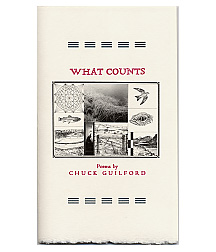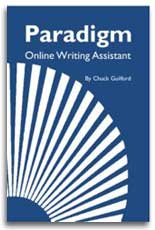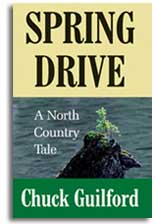Even though you've organized everything carefully, your paper may still feel somewhat choppy and disjointed. All the pieces are in place, yet the writing lacks fluidity, rhythm, continuity. The methods used to achieve this fluid quality are called transitional devices. These techniques will help you emphasize the links between levels on a pyramid or between chunks on a cluster map.
Some useful transitional devices are given below. Get to know them, and more importantly, learn how to use them in your own writing.
These techniques will help you emphasize the links between levels on a pyramid or between chunks on a cluster map.
Transitional Expressions
These words and phrases act as signposts for readers, telling which direction the writing is about to move in. They usually come at the beginning of a sentence, where they show how a new thought relates to what has come before. Some common transitional expressions are listed below, according to the type of relationship they indicate.
contrast and qualification--on the contrary, however, in contrast, still, yet, nevertheless, on the other hand
continuity--besides, furthermore, in addition, also, secondly, to continue, next, similarly, likewise, moreover, indeed, again, in other words
cause/effect--thus, therefore, as a result, consequently, hence, for this reason
exemplification--for instance, for example, in fact, more specifically, to illustrate
summation--finally, in conclusion, to sum up, in brief, lastly, as we have seen
Pronoun Reference
Pronouns stand in place of other words that have already been used. This makes them useful as transitional devices. They look back at and connect with what has come before, and in doing so they help readers see connections between thoughts.
The paragraph below uses pronouns as transitional devices:
Pronouns stand in place of other words that have been used. This characteristic makes them very useful as transitional devices. They look back at and connect with what has come before, and in doing so they help readers see connections between thoughts.
Notice the word "this" in the second sentence. It combines with "characteristic" and refers back to "stand in place of other words," thereby working much like a pronoun to provide a sense of continuity. "This," "that," "these," and "those" are called demonstratives and can be effective transitional devices. Be careful, though, to make the demonstrative's reference clear.
Key Words and Synonyms
Key words are words that refer to your central ideas. Often they appear in the subject or the verb slot of the main clause. Repeating these essential terms not only keeps them at the forefront of your readers' attention, but also helps stitch your sentences together, providing coherence and continuity between thoughts. When a key term begins to feel over used, substitute a synonym. Then, after using the synonym a few times, come back to the key word.
Careless, unconscious repetition is, of course, almost always weak and should be avoided, but deliberate, purposeful repetition is often an effective writing technique.
Sentence Patterns
Like key words, individual sentence patterns can be echoed and repeated from one place to another. Doing so helps to establish a rhythmic style, and if the repetitions accentuate organizational levels, readers will have an enhanced sense of order and design. As with key words, repeated sentence patterns also need to be varied now and then. Doing so adds interest and helps prevent monotony.
Activity
2.8 Choose a sequence of four or five paragraphs from a textbook and another from a popular magazine. Study the transitional devices in each and then write a paragraph of your own explaining the similarities and differences. Consider the writing's audience and purpose as well as its subject and format.




